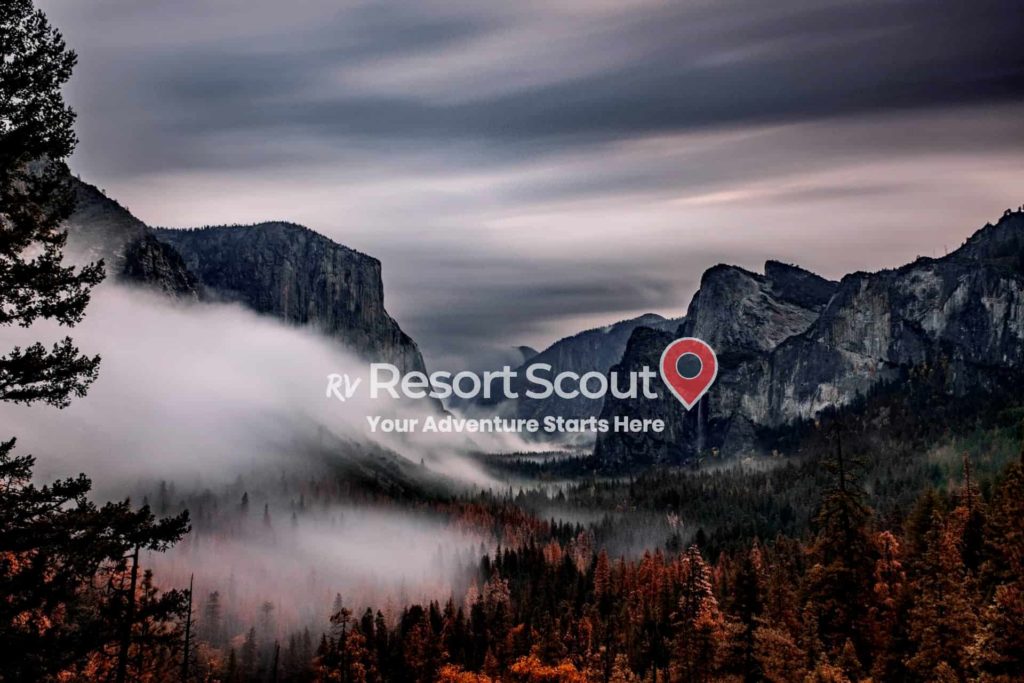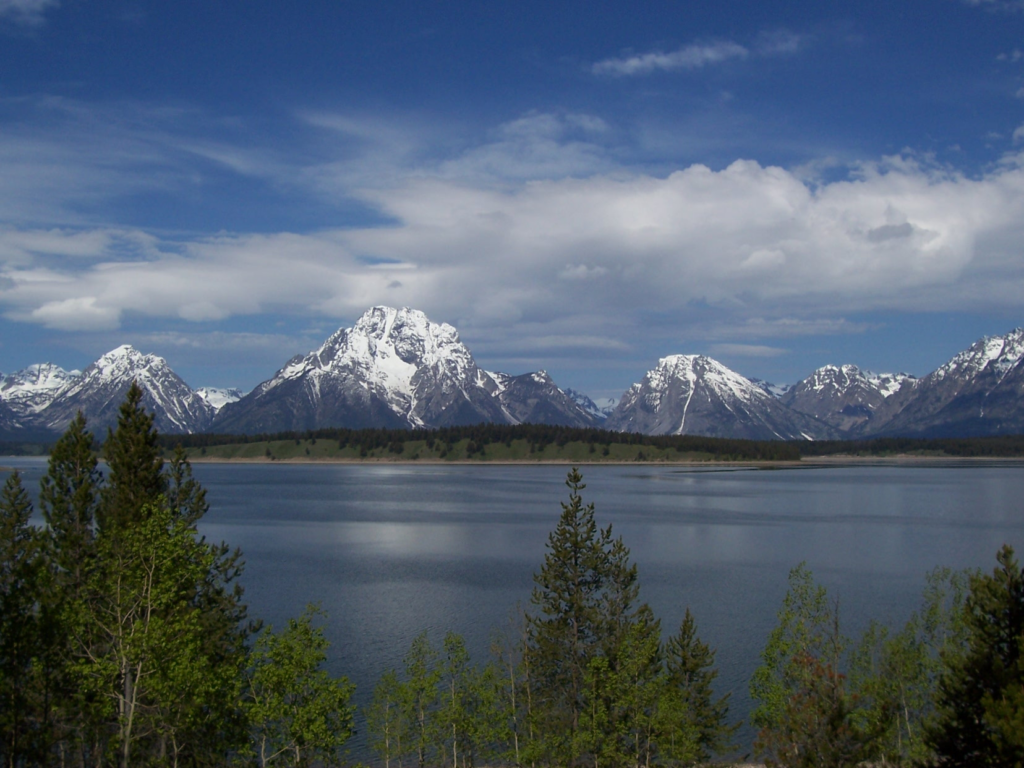The Ultimate Guide: Grand Teton National Park Wyoming

Grand Teton National Park Wyoming is a beautiful and popular national park located in the state of Wyoming. The park covers an area of 310,000 acres. It is home to many different types of wildlife, including bears, moose, and bison. The park also features many hiking trails, including some that lead to the summit of the Grand Teton mountain.
For a condensed view of the park feel free to check out rvResortScouts Grand Teton National Park Information listing.
Park History / General Overview
Grand Teton Wyoming has a rich history dating back thousands of years. Native American tribes, such as the Shoshone, have lived in the area for centuries. They have used the park’s resources for hunting, fishing, and gathering.
In the late 1800s, the first European settlers arrived in the area and began to establish homesteads and ranches. This led to conflicts with the Native American tribes and the eventual forced relocation of the tribes to reservations.
In the early 1900s, conservationists and lawmakers recognized the need to protect the area’s natural beauty and wildlife. In 1929, President Calvin Coolidge designated the area as a national monument, and in 1950, it became a national park.
Today, the park attracts millions of visitors each year who come to enjoy the park’s stunning scenery, hiking trails, and wildlife. The park is home to a diverse array of plants and animals, including bears, moose, bison, and elk. Visitors can also enjoy activities such as camping, fishing, and skiing.
The park is also home to the Grand Teton mountain. This mountain is 13,770 feet tall and is the highest peak in the Teton Range. Climbing the Grand Teton is a popular activity for experienced climbers.
Getting Oriented Within Grand Teton National Park Wyoming
Getting oriented in the National Park is easy. The park is divided into several sections, each with its own unique features and attractions.
The Teton Range is the most popular section of the park. This section is home to the Grand Teton mountain, which is the highest peak in the Teton Range. The Teton Range also features many other peaks and valleys, as well as beautiful lakes and streams.
The Jackson Hole valley is another popular section of the park. The Teton Range surrounds this section of the park. The valley is home to many different types of wildlife, including bears, moose, and bison. Visitors can also enjoy fishing and rafting in the Snake River, which runs through the valley.
The Gros Ventre Mountains section is located east of the Teton Range and offers different types of scenery with a different set of activities. This section features a beautiful mountain range and is home to many hiking trails. Visitors can also enjoy wildlife viewing and fishing in the Gros Ventre River.
The park’s main road, Teton Park Road, runs through all of these sections, making it easy to access different parts of the park. There are also many parking areas and pullouts along the road, where visitors can stop and take in the views.
In addition, visitors centers are located throughout the park. Here visitors can get maps and information about the different sections of the park and the activities available in each section.
Grand Teton National Park Essentials
The essentials for visiting the National Park include getting to the park, following the rules and regulations, and visiting the visitor centers.
To get to the park, visitors can fly into the Jackson Hole Airport and then take a shuttle or rental car to the park. The park is also easily accessible by car via US-26/US-89, US-191 and US-287.
When visiting the park, it is important to follow the rules and regulations. These include keeping a safe distance from wildlife, not leaving any trash behind, and respecting the park’s natural resources.
Weather in the park can be unpredictable. Because of this it is important that you are always prepared. The park can be very cold and snowy in the winter and hot and dry in the summer. Visitors should bring enough water and food, as well as sunscreen and insect repellent.
Additionally, it’s important to have a valid park pass to enter the park; these can be purchased online, at the park entrance station, or at one of the visitor centers.

Things You Need to Know
When planning a trip to Grand Teton National Park, there are several things you need to know in order to have a safe and enjoyable experience.
What to Pack: Visitors should bring appropriate clothing and gear for the weather, including warm layers for cold temperatures and rain gear for wet weather. Sunscreen and insect repellent are also important.
Amount of Food Needed: Visitors should bring enough food and water for their trip. You also need a means to store and prepare food, such as a cooler and a camping stove. There are also stores in the surrounding towns.
Hiking Gear: Hiking gear such as a backpack, water bottles, and a first aid kit are essential for the park’s many hiking trails.
Animals In The Area: Grand Teton National Park Wyoming is home to a diverse array of wildlife. Some of the wildlife includes bears, moose, bison, and elk.
Cost of Trip: The cost of a trip to Grand Teton can vary depending on factors such as transportation, lodging, and activities. You must have a pass to enter the park. You can purchase these passes before entering.
Family Activities: The park offers a variety of activities for families, such as hiking, fishing, and wildlife watching.
Conservation: Grand Teton National Park is a protected area. Respect the park’s natural resources and leave no trace. Visitors can learn more about the park’s conservation efforts at the visitor centers.
RV Dos and Don’ts: Visitors traveling with RVs are encouraged to use the park’s designated RV campsites. RVs are not allowed on backcountry roads, and generators should be turned off at night. Visitors should also be aware of RV size restrictions.
Best Hikes Within Grand Teton National Park
Grand Teton offers many great hikes for visitors to enjoy. Here are five of the best hikes in the park:
- Teton Crest Trail: This trail is a classic hike in the park and offers great views of the Teton Range and the valley below. The trail is roughly 40 miles long and can be done as a multi-day backpacking trip or as a day hike on selected sections.
- Cascade Canyon Trail: This hike leads to a beautiful waterfall and offers great views of the Teton Range. The trail is about 6 miles round trip and is moderate in difficulty.
- Death Canyon Trail: This hike is a bit more challenging, but leads to a beautiful lake and offers great views of the Teton Range. The trail is about 8 miles round trip.
- Paintbrush Canyon Trail: This hike is through a colorful canyon and offers great views of the Teton Range. The trail is about 8 miles round trip and is moderate in difficulty.
- Alaska Basin Trail: This hike is great for wildflower viewing and wildlife spotting. The trail is about 8 miles round trip and is easy.
Hikers should bring enough water and food, as well as appropriate clothing and gear.
Accommodations
Grand Teton National Park offers several options for accommodations for visitors, including campgrounds, lodges, and cabins.
Campgrounds: The park offers several campgrounds for visitors, including Colter Bay, Jenny Lake, Gros Ventre and Signal Mountain. These campgrounds offer RV and tent camping and have amenities such as flush toilets and potable water.
Lodges: The park has several historic lodges located throughout the park, such as Jackson Lake Lodge and Colter Bay Village. These lodges offer a range of accommodations, from hotel rooms to cabins, as well as restaurants, gift shops, and other amenities.
Cabins: The park also has a number of cabins available for rent, these are located in Colter Bay and Flagg Ranch areas. They offer a rustic, yet comfortable option for visitors.
Backcountry Camping: Visitors can also experience camping in the park’s backcountry by obtaining a permit. You can only backcountry camp at designated sites and requires following strict regulations to minimize impact on the park’s resources.
It’s important to note that accommodations in the park, especially in the peak season, fill up quickly, so it’s recommended to book well in advance. Visitors should also be aware that the park has a no-smoking and no-pets policy in all of its facilities.
By choosing one of these accommodations options, visitors can fully experience the beauty of the National Park and make the most of their visit.
Safety
Safety is an important consideration when visiting Grand Teton National Park. There are several potential dangers to be aware of, including wildlife, steep terrain, and changing weather conditions.
Wildlife: The park is home to a diverse array of wildlife, including bears, moose, bison, and elk. Visitors should be aware of the park’s rules for safely viewing wildlife and know how to react if they encounter an animal in the wild.
Steep Terrain: The park features steep and rugged terrain, especially in the Teton Range. Do not attempt hikes you are not ready for physically.
Changing Weather: The weather in the park can change quickly and unexpectedly, and visitors should be prepared for the weather by bringing appropriate clothing and gear. Visitors should also be aware of any weather alerts or closures, and be prepared for sudden storms or lightning.
First Aid: Visitors should also be prepared for emergencies by bringing a basic first aid kit and knowing how to contact park rangers in case of an emergency. Cell phone coverage in the park can be spotty, so it’s important to know your location and how to communicate your need for help.
Rules and Regulations: Visitors should also be aware of the park’s rules and regulations, such as staying on designated trails and respecting wildlife, and follow them to ensure a safe and enjoyable visit.
What’s In The Surroudning Area
The surrounding area of Grand Teton National Park offers many opportunities for visitors to explore and enjoy.
Outdoor Activities: The area is popular for outdoor activities such as fishing, rafting, and skiing. Visitors can also enjoy hiking, biking, and horseback riding in the nearby Bridger-Teton National Forest.
Towns: The area surrounding the park is home to several small towns, such as Jackson and Teton Village, where visitors can find restaurants, shops, and other amenities.
Historical sites: The area also has several historical sites such as Mormon Row, a historic homestead area, and the Menor’s Ferry, a historic ferry crossing on the Snake River, that visitors can explore.
National Forests: The park is surrounded by several national forests, including the Bridger-Teton and Caribou-Targhee National Forest, which offer additional recreational opportunities, such as camping, hiking, and fishing.
Yellowstone National Park: The park is also located close to the Yellowstone National Park, visitors can take a day trip to explore the famous geysers, hot springs, and other geothermal features of the park.
Explore the area nearby to enjoy the stunning nature, rich history, and diverse culture of the region and enhance your trip to Grand Teton.
Grand Teton National Park Wrap Up
Grand Teton is a spectacular destination that offers something for everyone. The park’s history, diverse wildlife, and stunning scenery make it a must-see destination for nature lovers, history buffs, and outdoor enthusiasts alike. Visitors can hike the Teton Crest Trail for a classic park experience, fish in the Snake River, or take a scenic drive along Teton Park Road to explore the different sections of the park. The park also offers several options for accommodations. Including camping, staying in a cabin or a lodge, or even backcountry camping. It has something for everyone.
The surrounding area also offers plenty of opportunities to explore and enjoy the natural beauty of the region, and visitors can take a day trip to Yellowstone National Park to see more. The park staff are always happy to help and provide information to make your visit enjoyable.


